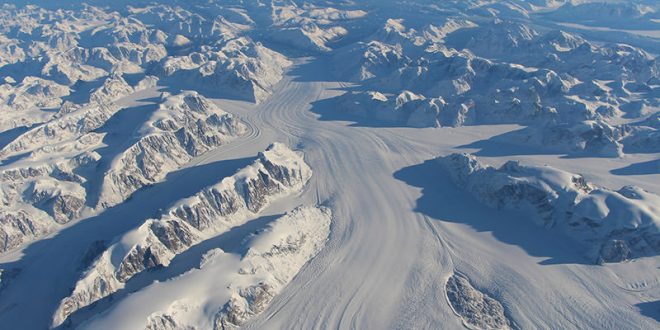Researchers have known for decades that the changing climate has impacted the Antarctic Ice Sheet dramatically. A recent study is suggesting this impact goes both ways.
Global climate models that look at the last several thousand years have failed to account for the amount of climate variability captured in the paleoclimate record, according to lead author Pepijn Bakker, a former post-doctoral researcher at Oregon State University now with the MARUM Center for Marine Environmental Studies at the University of Bremen in Germany.
The research team’s hypothesis was that climate modelers were overlooking one crucial element in the overall climate system – an aspect of the ocean, atmosphere, biosphere or ice sheets – that might affect all parts of the system.
“One thing we determined right off the bat was that virtually all of the climate models had the Antarctic Ice Sheet as a constant entity,” Bakker said. “It was a static blob of ice, just sitting there. What we discovered, however, is that the ice sheet has undergone numerous pulses of variability that have had a cascading effect on the entire climate system.”
The Antarctic Ice Sheet, in fact, has demonstrated dynamic behavior over the past 8,000 years, according to Andreas Schmittner, a climate scientist in Oregon State’s College of Earth, Ocean, and Atmospheric Sciences and co-author on the study.
“There is a natural variability in the deeper part of the ocean adjacent to the Antarctic Ice Sheet – similar to the Pacific Decadal Oscillation, or El Niño/La Niña but on a time scale of centuries – that causes small but significant changes in temperatures,” Schmittner said. “When the ocean temperatures warm, it causes more direct melting of the ice sheet below the surface, and it increases the number of icebergs that calve off the ice sheet.”
Those two factors combine to provide an influx of fresh water into the Southern Ocean during these warm regimes, according to Peter Clark, a paleoclimatologist in OSU’s College of Earth, Ocean, and Atmospheric Sciences and co-author on the study.
“The introduction of that cold, fresh water lessens the salinity and cools the surface temperatures, at the same time, stratifying the layers of water,” Clark said. “The cold, fresh water freezes more easily, creating additional sea ice despite warmer temperatures that are down hundreds of meters below the surface.”
The discovery may help explain why sea ice has expanded in the Southern Ocean despite global warming, the researchers say. The same phenomenon doesn’t occur in the Northern Hemisphere with the Greenland Ice Sheet because it is more landlocked and not subject to the same current shifts that affect the Antarctic Ice Sheet.
“One message that comes out of this study is that the Antarctic Ice Sheet is very sensitive to small changes in ocean temperatures, and humans are making the Earth a lot warmer than it has been,” Bakker said.
Sediment cores from the sea floor around Antarctica contain sand grains delivered there by icebergs calving off the ice sheet. The researchers analyzed sediments from the last 8,000 years, which showed evidence that many more icebergs calved off the ice sheet in some centuries than in others. Using sophisticated computer modeling, the researchers traced the variability in iceberg calving to small changes in ocean temperatures.
The Antarctic Ice Sheet covers an area of more than 5 million square miles and is estimated to hold some 60 percent of all the fresh water on Earth. The east part of the ice sheet rests on a major land mass, but in West Antarctica, the ice sheet rests on bedrock that extends into the ocean at depths of more than 2,500 meters, or more than 8,000 feet, making it vulnerable to disintegration.
Scientists estimate that if the entire Antarctic Ice Sheet were to melt, global sea levels would rise some 200 feet.
Results of the study are being published this week in the journal, Nature.
Agencies/Canadajournal
 Canada Journal – News of the World Articles and videos to bring you the biggest Canadian news stories from across the country every day
Canada Journal – News of the World Articles and videos to bring you the biggest Canadian news stories from across the country every day



